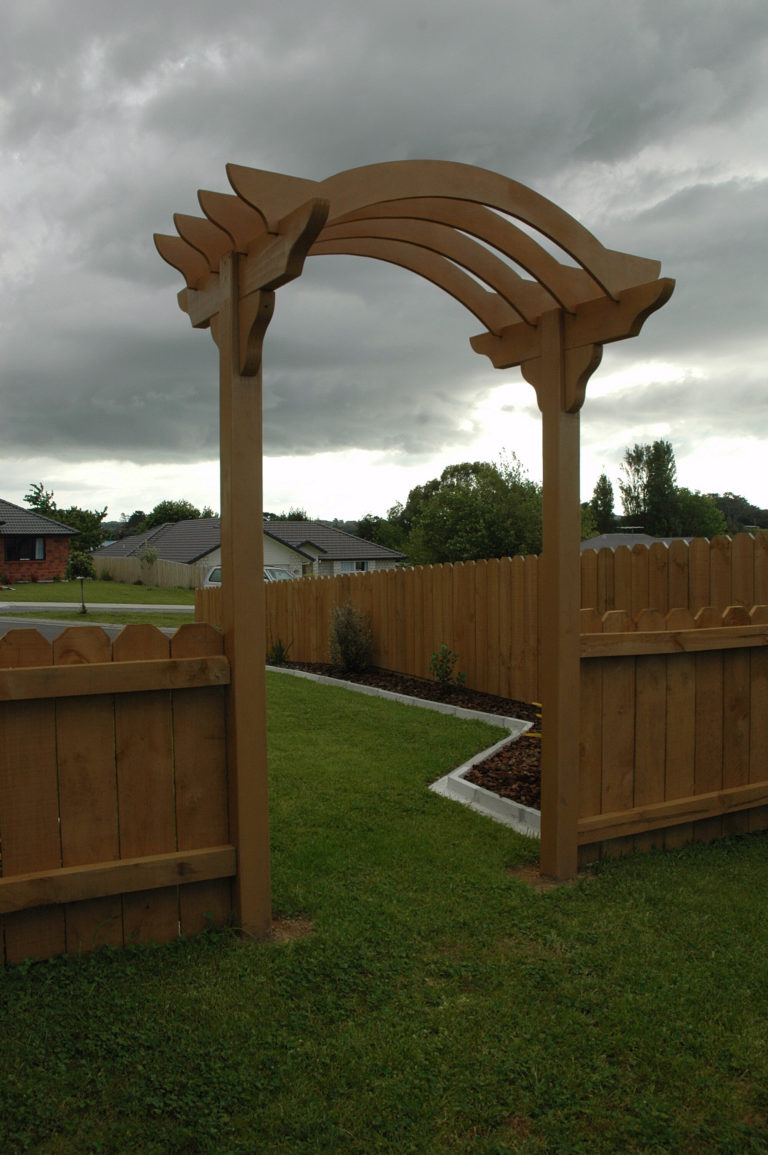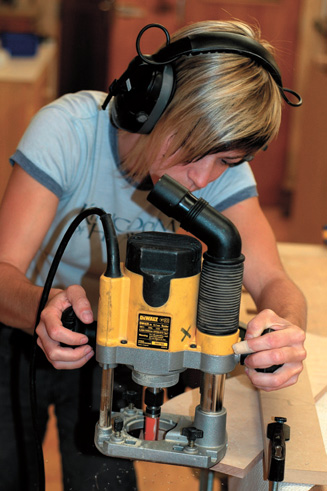By Bob Thickpenny
Enjoy the garden from a comfortable chair that is relatively straightforward to make
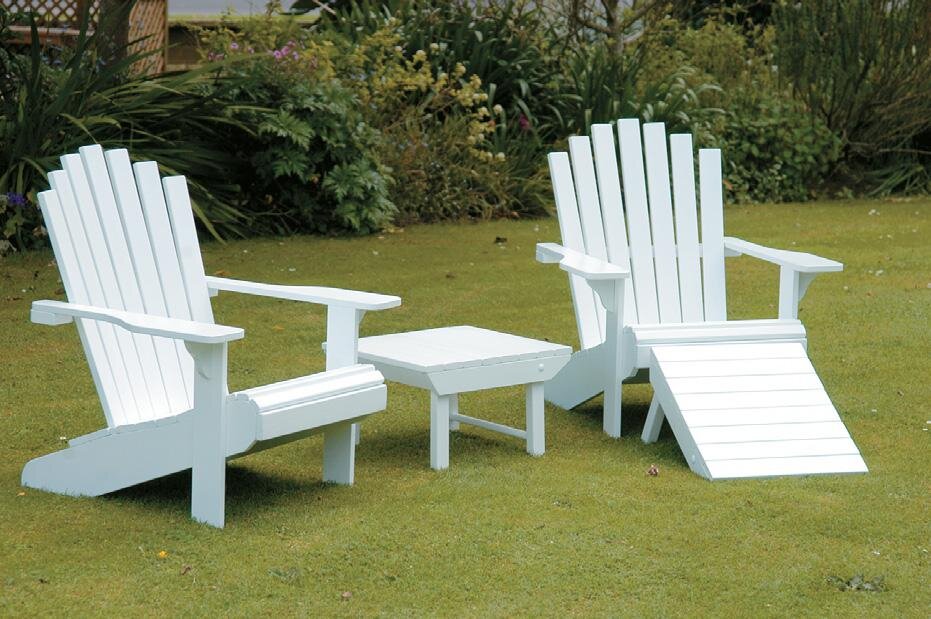
NOTHING DENOTES SUMMER as much as a Cape Cod / Adirondack chair.
A chair with low-slung and raked back, and wide arms perfect for holding a drink, seems to epitomise long, lazy afternoons. This design was created in the Adirondack Mountains of New York state where New Yorkers would take their respite from the hot humid summers of the city. It is also commonly called the Cape Cod chair – perhaps it was just as common there, or maybe it’s easier to say.
The chair itself is relatively straightforward and this version is easily fashioned from commonly available material, in this case H3 tanalised pine primed and painted. But any suitable hardwood would do as well. When selecting your timber for this chair, try to ensure you get the best-looking, clear stock you can. Check it for knots and twist. If you plan to make more than one chair, it is wise to make up a template or make up one part that you can trace the others from. Since I make these on a regular basis, I use templates.
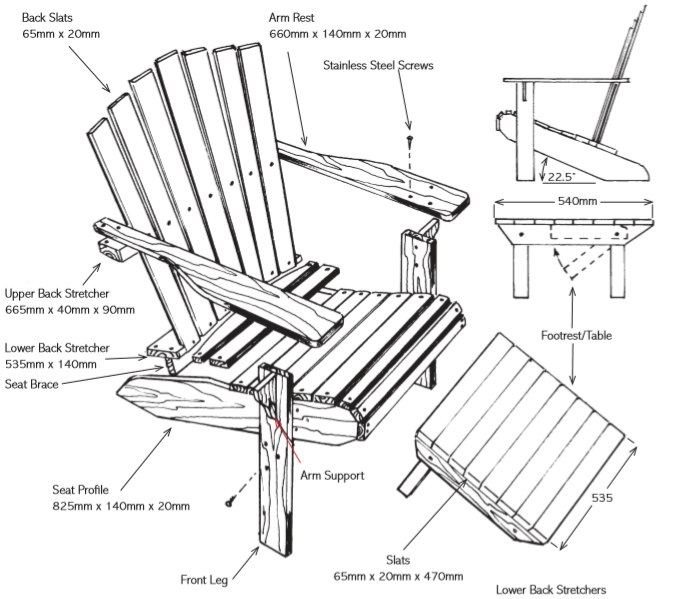
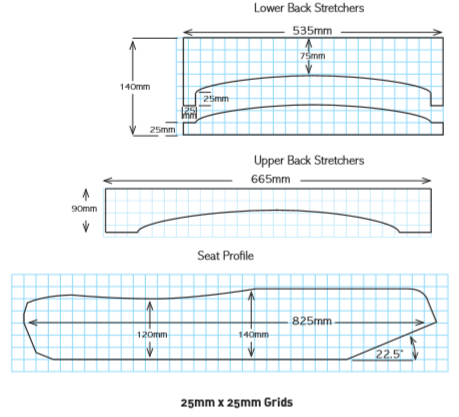
Marking out
Begin by marking out the two side pieces, arms and the outside back support from 150 x 25mm stock Roughly cut each piece to length and cut the foot angle on the side profi le to 22.5º.
Similarly, cut the angles at the other end at 22.5º. Stack the two sidepieces together and fi finish cutting the profile on the bandsaw. Cutting them together ensures that any slight deviations from the profile are replicated in both pieces equally.
Mark and cut out the arms. Try to minimise any imperfections in the timber so that, at the very least, they are on the underside of the piece. Cut the arms to 665mm and stack the two pieces for finishing on the bandsaw. Cut out the profile for the arm shape.
View fullsize
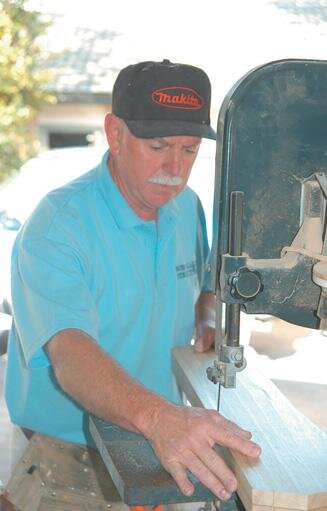
View fullsize
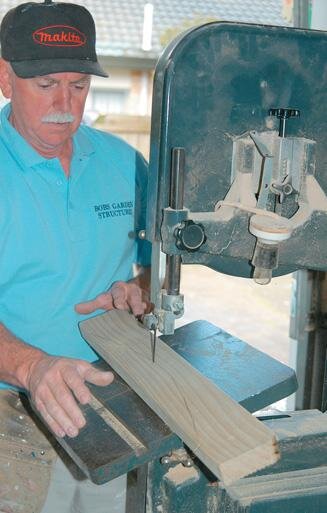
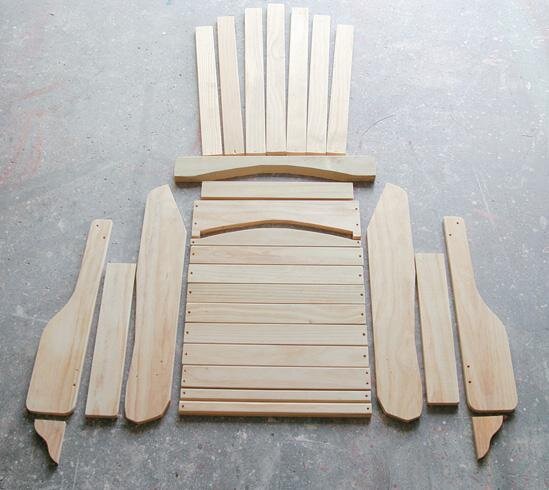
The completed components
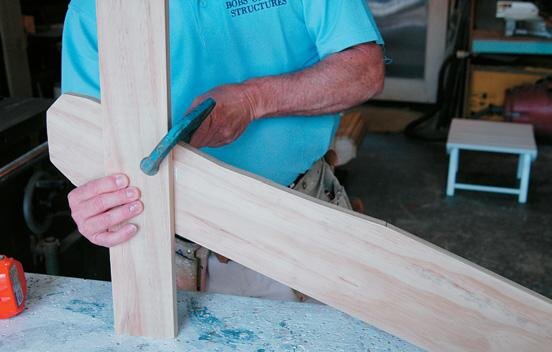
With the foot flat to the bench, clamp the upright in place
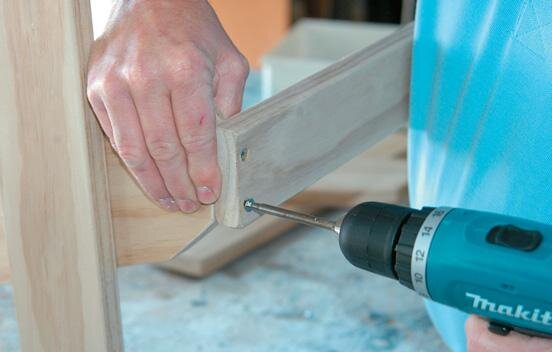
Fixing the first seat slat in position
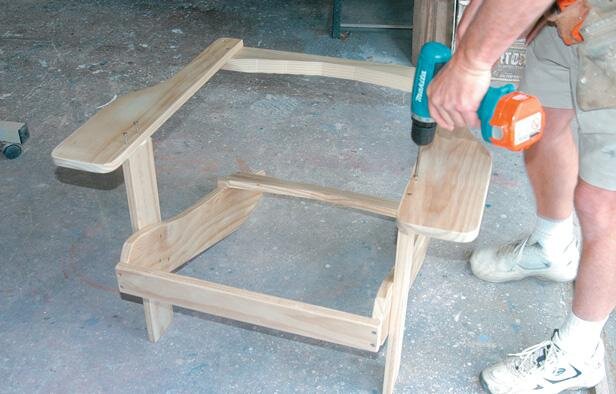
The skeleton takes shape
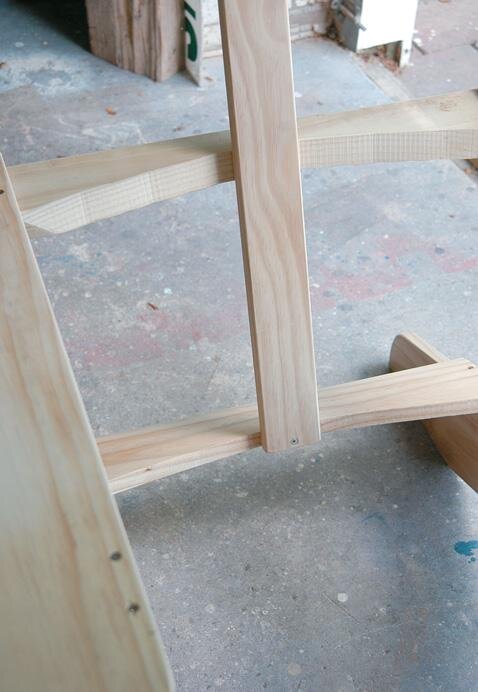
First back slat in position
Mark up the stretchers for the base of the back slats and cut out the curve.
My template has notches for the placement of the individual boards but this isn’t strictly necessary. Finally, mark out the curves for the arm supports from remaining scrap and cut these on the bandsaw. Cut two pieces from the 150mm stock at 535mm long and rip them to 90mm wide.
Cut the 90mm board to 500mm for the upright front legs. Keep the scrap, as it will be ripped again for the two narrow seat slats.
Set up a stop at 535mm on the drop saw bench and cut the eight-seat slats to length from the 65mm x 20mm fence picket stock. From the 100mm x 40mm stock, mark out the upper back slat support to 665mm length. Shape the curve on this to 20 degrees by tilting the table on the bandsaw or tilting your jigsaw to 20 degrees to accommodate the slope of the back slats.
Now drill all seat slats with countersunk holes 10mm from their ends, including the two thin slats that were ripped from the waste of the legs. The slat with four holes is the fi first one at the front. Round off the two thin seat slats either on a router with a radius bit or feather them off with the plane.
Sand these and all the other edges. Clean up all the pieces.
When sanding tanalised pine, ensure that you have dust protection and avoid ingesting the dust. I usually prime all the edges at this stage. Once dry, they can be lightly sanded. Of course, it’s not strictly necessary to paint these chairs. If they are made from jarrah, kwila or even macrocarpa, they could be left unpainted. If you are using tanalised timber, however, it is an idea to paint it to seal the tanalising in; it can tend to leach out over time.
Once all the parts are sanded and primed we can proceed with the final assembly.
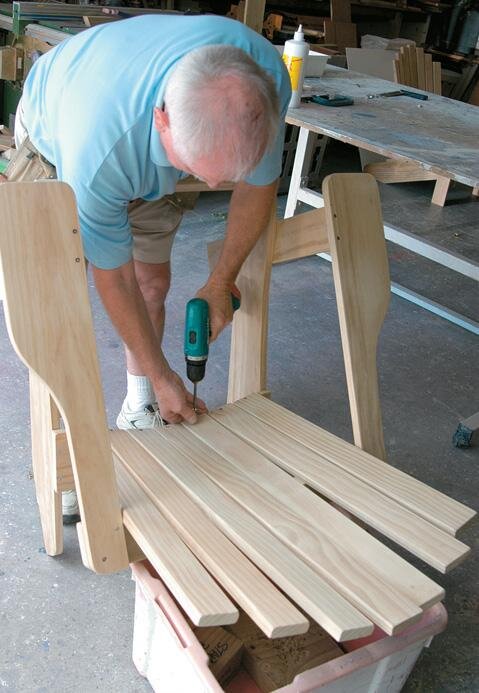
Fixing the back slats. Start at the outside
Assembly
Hold the leg upright against the front end of the seat profi le piece and mark a line 90mm from the end. (The upright happens to be 90mm wide).
Clamp the leg upright against the seat profile on this line with the seat-profile rear foot flat to the bench. Screw the upright to the seat side with 1 ¼ inch (32mm) screws through the seat side in the previously drilled holes.
Check again that the leg upright is square. Do the same to the other side.
Now glue and screw the front seat slat with four screws to the front of the seat profile. Mark a position 485mm from the front face of the seat profile and screw the lower back support to both sides with four screws. Don’t glue this, as it may need to be adjusted later.
Glue and screw the arms to the upper back support, ensuring that the distance between the arms is 535mm and the arms are square. Mark a pencil line 65mm from the front face of the arm.
Place the arms on top of the upright leg with the 65mm overhang and glue and screw them in place. We have now the skeleton of the chair assembled.
Back slats
Fit the middle (longest) back slat in place flush with the bottom, dead centre, and glue and screw it.
Fix all the remaining back slats to the bottom support and fan them out evenly. Screw them to the upper back support.
Fit the seat slats, beginning with the two narrow slats at the front edge of the seat, then glue and screw the remainder. Finish with the shaped board. This should fi t snugly against the slats but if it doesn’t you can adjust the back stretcher.
This is why we don’t glue this board initially. If need be, undo the back stretcher and adjust the fit of the seat slat. Fit the brace between the seat profi le sides beneath the back stretcher.
Lastly, glue and screw the arm supports to the arm and upright leg.
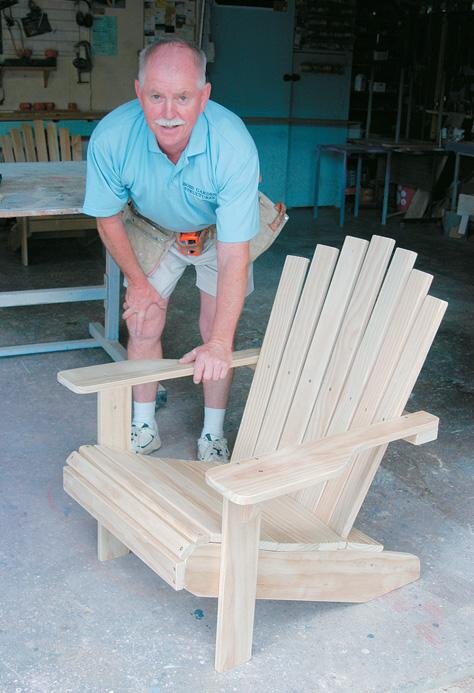
Finished
Footrest side table
To fi finish the set, I developed this footrest which can also act as a side table.
At first, it was intended just as a footrest, but I realised that with the addition of the folding legs it would make an equally useful side table.
Cut eight slats from 65mm x 20mm stock to 470mm. Mark up and rip the two sides to 530mm.
Cut the angles on the drop saw on either end of the sides. The front is cut to 34° and the back slope at 56º. Bore a hole for the 10mm coach bolt in the side, 25mm from the top and 125mm from the end. Out of 50mm x 40mm stock, mark and cut out two folding legs to 300mm each.
The end of the folding leg is not entirely rounded.
It is flattened off so that when the leg is folded out for standing, the top of the leg meets the top boards flat. Here, it is stopped firmly in place to be steady for the table. It doesn’t over-extend. Drill the 20mm hole for the dowel in each leg, being careful not to drill all the way through.
Drill a 10mm hole in the other end of the leg, 15mm from the side and 25mm from the end as shown in the plan. This is to house the coach bolt. Set up the sides and glue and screw the first slat in place. This overhangs the end by about 10mm. Square the sides and the slat and screw and glue it in place.
Now place all the rest of the slats and clamp them together and screw and glue them in place. When the top is assembled, fit a brace between the sides.
Bevel the board at 34º where it meets the top and screw this in place at the fixed leg-end. Fit the dowel in between the two moveable legs, glue it and lock it in place with a small galvanised nail.
Now attach the moveable legs with coach bolts and washers. Fit one washer between the leg and the sides and the other under the nut. Mark the length for the fixed leg by measuring it against the moveable leg.
Once this is in place, to ensure the table is flat glue and screw it in place up against the brace.
To finish the piece, I fill the screw holes with builder’s bog twice, as it will shrink after the fi first application. Sand this flat, then undercoat the chair and apply two coats of a good quality acrylic paint. Now all you need is a cold beer and a warm afternoon.
View fullsize
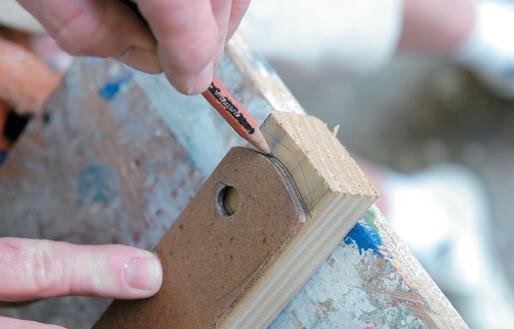
View fullsize
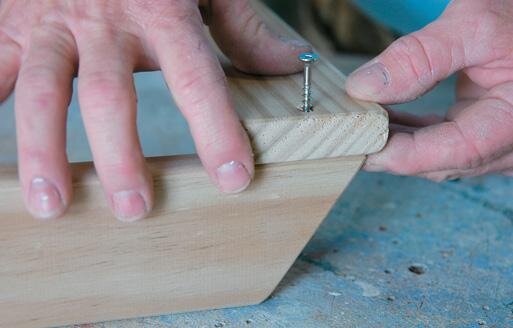
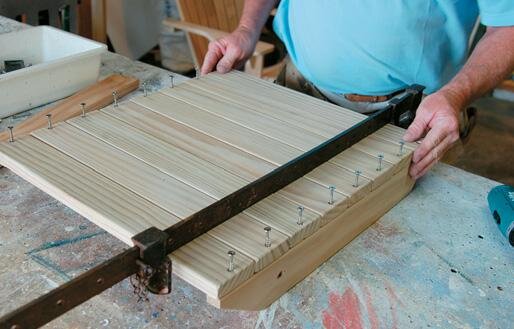
Clamping the slats makes assembly faster
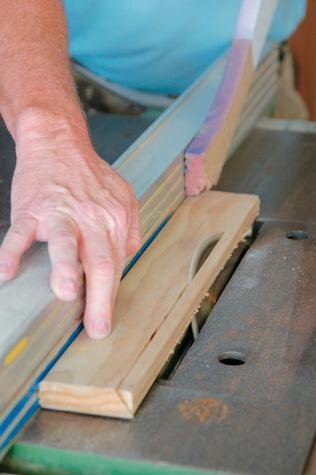
Cutting the bevel on the end brace at 34º
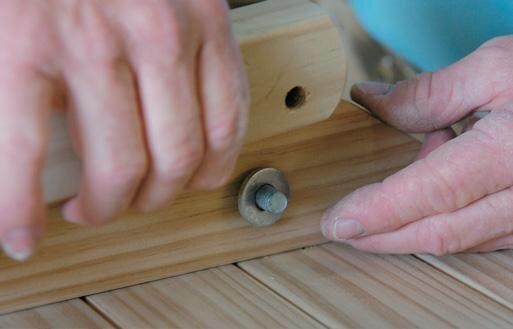
Fixing the moveable legs. Note the off-centre bolt hole
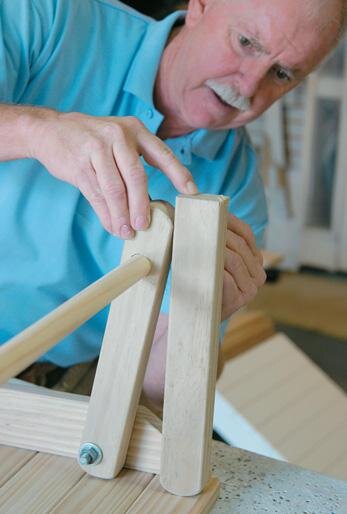
Mark the fixed leg length from the moveable one for stability
MATERIALS
Chair
5m x 150mm x 25mm Tanalised pine
7 x 1.8m x 65mm x 20mm fence pickets
1 x 700 x 100mm x 40mm tanalised decking
54 x 1 ½ inch (38mm) x 8g stainless steel screws
6 x 1 ¼ inch (32mm) x 8g steel screws
Back slats cut sizes
2 @ 650mm x 65mm x 20mm
2 @ 700mm x 65mm x 20mm
2 @ 745mm x 65mm x 20mm
1 @ 760mm x 65mm x 20mm
1 @ 495 x 65mm x 20mm to serve as the brace between legs under the back support.
Seat slats
8 @ 535mm x 65mm x 20mm
Footrest table
3 x 1.8m x 65mm x 20mm tanalised fence pickets
1.2m x 50mm x 40mm tanalised pine
1 x 395mm x 25mm dowel
2 x 65 x 10 galv coach bolts
4 x 10mm galv washers

